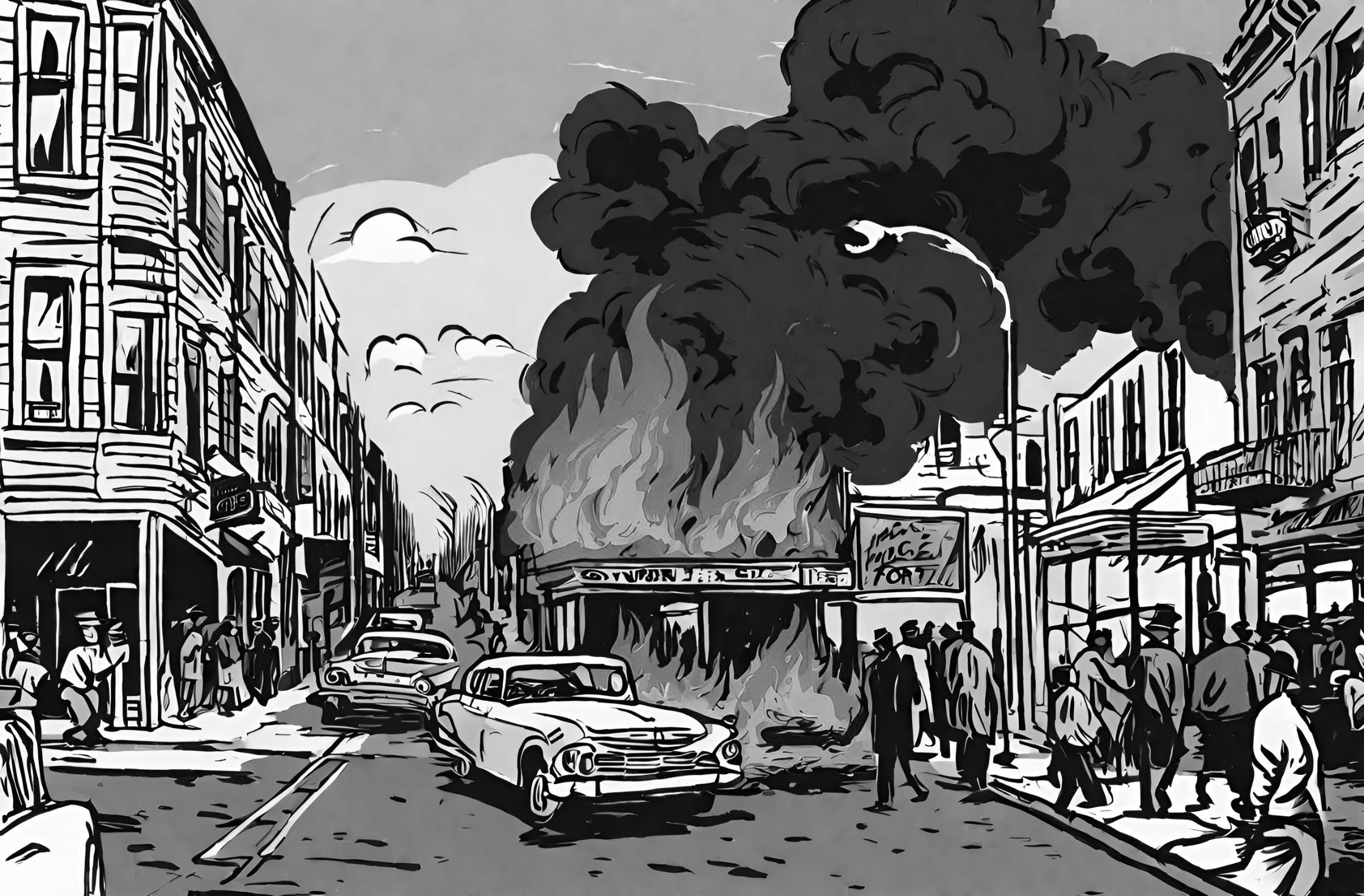Flashback to January 2
American History

The Race Riot in Harlem, New York City and its Spread to Bedford-Stuyvesant (Brooklyn)
On July 18, 1964, a race riot erupted in Harlem, New York City, triggering a series of violent events that quickly spread to Bedford-Stuyvesant in Brooklyn. This significant historical event highlighted the deep-rooted racial tensions and systemic injustice prevalent in many urban areas during the Civil Rights Movement. In this article, we will delve into the causes and repercussions of these riots, shedding light on an important moment in American history.
The underlying causes of the race riot can be traced back to years of racial discrimination and economic disparities faced by the African American community. Poverty, unemployment, lack of access to quality education, and police brutality were pervasive issues that fueled frustration and anger among black residents in Harlem and beyond.
The immediate spark that ignited the riot was the fatal shooting of James Powell, a 15-year-old African American boy, by a white off-duty police officer named Thomas Gilligan. Powell’s death on July 16, 1964, incensed the black community, already weary of the regular instances of police violence targeting people of color. The next day, tensions reached a boiling point when thousands gathered outside the local police station demanding justice for Powell.
As the crowds grew, the protests turned into a violent confrontation between the police and the demonstrators. Rioting, looting, and arson quickly spread throughout Harlem, with businesses being destroyed, windows shattered, and fires raging in the streets. The National Guard was called in to restore order, but their presence only further exacerbated the situation.
This racially charged violence did not stay contained within the boundaries of Harlem. On the evening of July 18, the unrest spilled over into Bedford-Stuyvesant, a predominantly black neighborhood in Brooklyn. The frustrations of the African American community in Brooklyn mirrored those of their counterparts in Harlem, resulting in similar acts of violence, looting, and confrontations with the police.
The rioting lasted for several days, with the unrest gradually subsiding by July 23, 1964. By the time order was restored, the damage caused by the riots was extensive, with countless businesses destroyed, homes damaged, and losses of lives and livelihoods on both sides.
The repercussions of the Harlem race riot and its spread to Bedford-Stuyvesant were far-reaching. In the immediate aftermath, an official investigation into the causes of the unrest was launched. The Kerner Commission, appointed by President Lyndon B. Johnson, concluded that the riots were an expression of pervasive frustration and a direct result of systemic racism and economic inequality. This landmark report shed light on the reality of institutionalized discrimination and urged the government to take immediate action.
The race riot served as a wake-up call for both the government and society at large, forcing them to confront the deep-seated racial tensions and the urgent need for change. The event became a prominent rallying point for civil rights activists, who pushed for the enactment of comprehensive anti-discrimination laws and social reforms.
Although the race riot in Harlem and its spread to Bedford-Stuyvesant were undoubtedly tragic and destructive, they played a crucial role in bringing national attention to the persistent racial inequalities plaguing American cities. The events of July 18, 1964, served as a catalyst for change, propelling the civil rights movement forward and paving the way for greater social justice and equality.
In retrospect, the race riot in Harlem and its subsequent spread to Bedford-Stuyvesant serves as a stark reminder of the work that still needs to be done to address racial injustices and inequality in our society. As we strive for a better future, it is essential to remember the lessons learned from the past, ensuring that incidents like these remain confined to the pages of history, rather than recurring in our present and future.
We strive for accuracy. If you see something that doesn't look right, click here to contact us!

